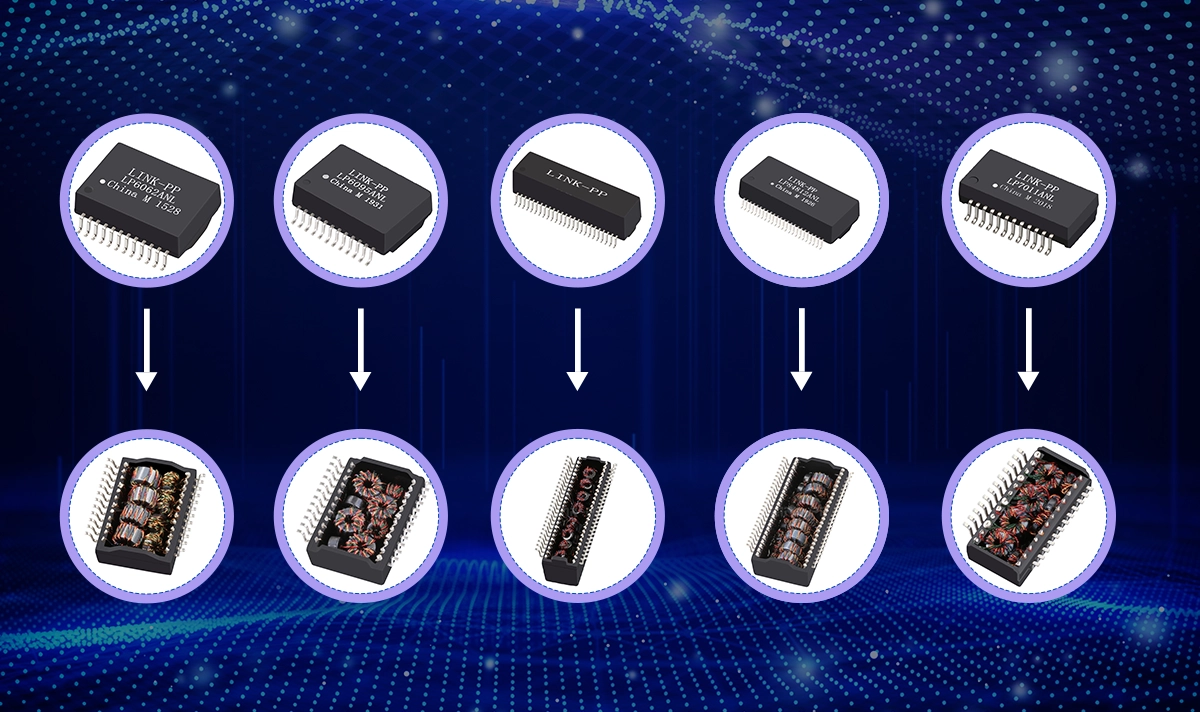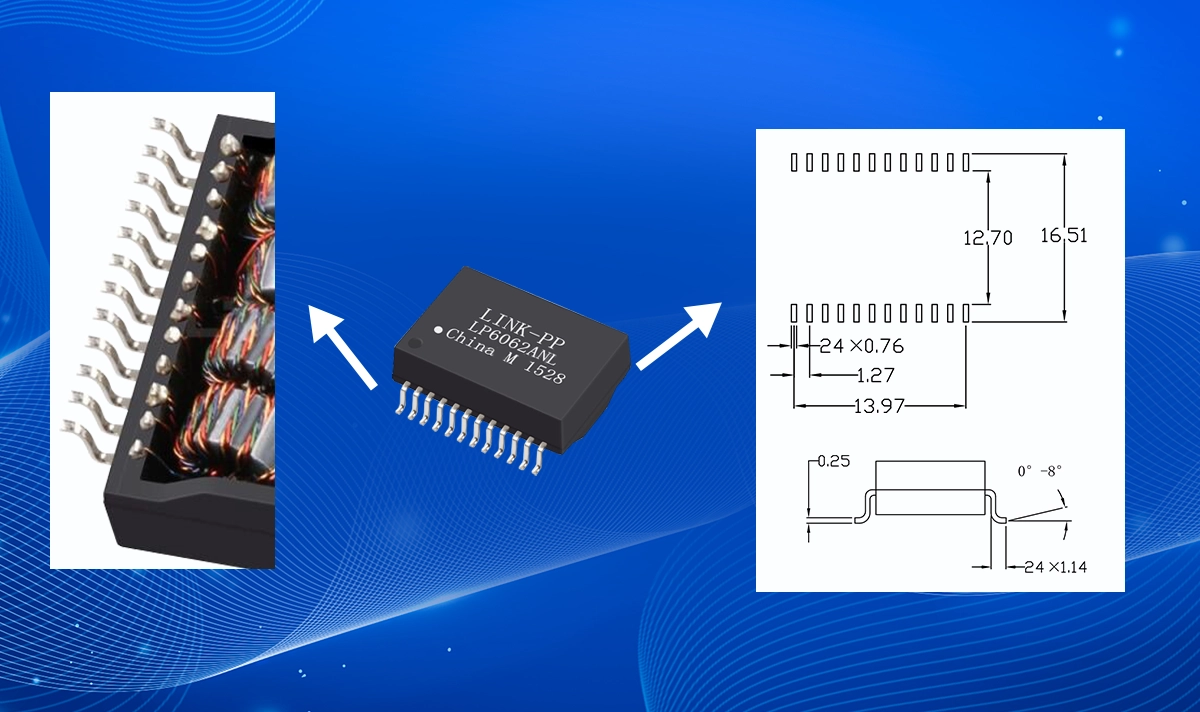
In modern networking equipment, LAN transformers play a crucial role in signal integrity and electromagnetic interference (EMI) suppression. With the growing demand for compact and efficient designs, Surface Mount Technology (SMT) has become the preferred method to install LAN transformers on printed circuit boards (PCBs). This article explains the advantages, design considerations, and applications of SMT mount LAN transformers, with a focus on the high-quality products offered by LINK-PP.
What is an SMT LAN Transformer?
An SMT mount LAN transformer is a network magnetics component designed for surface mounting directly onto the PCB. Unlike traditional through-hole parts, SMT transformers allow for smaller footprints and automated assembly processes, making them ideal for modern, high-density network device designs.
Why Choose SMT for LAN Transformers?
Space Efficiency: SMT components occupy less board area compared to through-hole transformers. This compactness is essential for devices like routers, switches, and IoT equipment where PCB space is limited.
Enhanced Electrical Performance: SMT transformers reduce lead lengths and parasitic inductances, resulting in better signal quality and improved high-frequency performance critical for fast Ethernet standards.
Manufacturing Efficiency: SMT is fully compatible with automated pick-and-place and reflow soldering processes. This compatibility reduces production costs and improves consistency, vital for large-scale manufacturing.

Key Design Considerations for SMT LAN Transformers
Package and Footprint Accuracy
Designing precise PCB footprints that match the transformer’s SMD package is essential. LINK-PP provides detailed datasheets specifying recommended pad sizes and layouts to ensure reliable solder joints and electrical connections.Thermal and Mechanical Reliability
SMT LAN transformers must withstand standard reflow soldering temperatures without performance degradation. Additionally, because SMT joints have less mechanical strength than through-hole leads, PCB designs may incorporate reinforcement methods such as underfill or mechanical supports to withstand stresses during connector mating cycles.Signal Integrity and EMI Management
Optimizing PCB layout around the transformer—including minimizing trace lengths and implementing proper grounding and shielding—helps maintain signal integrity and reduce EMI. LINK-PP’s magnetics modules are designed to meet stringent network standards, providing robust EMI suppression.Compatibility with Automated Assembly
LINK-PP’s SMT LAN transformers are engineered for smooth integration into automated manufacturing lines, supporting high-volume production with consistent quality. Quality control methods like Automated Optical Inspection (AOI) ensure reliable soldering and placement.
LINK-PP: Your Trusted Supplier of SMT LAN Transformers
LINK-PP is a global manufacturer of high-quality LAN magnetics, trusted by industry leaders in networking, telecom, and industrial automation. Our SMT transformer range supports:
IEEE 802.3 Ethernet compliance
RoHS & REACH certifications
Full compatibility with major PHY chipsets (Broadcom, Intel, Realtek, etc.)
Custom design options for specific electrical or mechanical requirements
➡️ Explore our SMT LAN transformers:
🔗 LINK-PP SMT LAN Transformer Catalog
See Also
👉Understanding the Basics and Benefits of SMT (Surface Mount Technology)
👉 Learn How Electromagnetic Interference (EMI) Affects Signal Quality and How to Control It
👉Discover the Key Differences Between Wave Soldering and Reflow Soldering in PCB Assembly
👉Explore How LINK-PP’s LAN Transformers Improve Signal Integrity in Ethernet Designs




